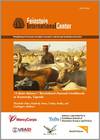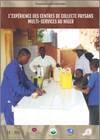This article discusses the impacts of climatic change on sable hunting for the Evenk, a minority indigenous people of Russia. Sables (a small carnivorous mammal) are mainly hunted for their fur. Climate change leads to specific environmental changes, which in turn creates changes in traditional economic practices, which then triggers socio-economic problems among a population that needs to adapt its hunting techniques.
Year of publication: 2016Organization: Auteurs individuels
Topic: Services environnementaux, Les savoirs autochtones, Peuples autochtones
Language: English
Type of document: Scientifique
Geographical coverage: Asie centrale
This picture series is a participatory, inclusive adult education training method for communities and other local level stakeholders in development programmes dealing with yak milk production.
Year of publication: 2016Organization: Centre international de mise en valeur intégrée des montagnes (ICIMOD)
Topic: Économie
Language: English
Type of document: Technique
Geographical coverage: Asie centrale
Meet Hajekber Serikbol, a pastoralist community leader in the Western Foothills of Mongolia. They call themselves the "friendship community" and are part of 200-500 million nomadic custodians that take care of our planet, managing rangelands that cover a quarter of the world's land surface. This film is part of the Global Call to Action Initiative, aimed at doubling the global area of land legally recognized as owned or controlled by Indigenous Peoples and local communities by 2020.
Year of publication: 2016Organization: Coalition internationale pour l’accès à la terre (ILC)
Topic: Régime foncier
Language: English
Type of document: Vidéos
Geographical coverage: Asie centrale
Cette note s’inscrit dans le cadre de l’Appel mondial à l’action pour les droits fonciers
autochtones et communautaires, et met l’accent sur la nécessité de sécuriser les droits
fonciers des populations pastorales, qui représentent entre 200 et 500 millions de personnes
dans le monde selon les estimations.
Organization: Coalition internationale pour l’accès à la terre (ILC)
Topic: Régime foncier
Language: English, Français, Español
Type of document: Technique, Politiques et législation
Geographical coverage: Global
Following years of conflict and national policies aimed at encouraging sedentarization of pastoral populations, international and bilateral actors are increasingly shifting their focus towards supporting animal production systems. This report reviews the state of animal-based livelihoods in the Karamoja region of northeastern Uganda and examines how animal ownership affects a household’s ability to weather shocks.
Year of publication: 2016Organization:
Topic: Conflit, Résilience
Language: English
Type of document: Technique, Scientifique
Geographical coverage: Afrique orientale
It is extremely challenging to obtain reliable information on transient pastoral livestock populations wandering across extensive rangelands in search of seasonally available pasture. These Guidelines offer guidance on enumerating livestock through ground and aerial surveys, using input from 9 country case-studies. It is a reference document providing technical and operational guidance on various aspects of the data collection process, with particular attention being paid to developing countries.
Year of publication: 2016Organization: Auteurs individuels
Topic: Économie, Organisation, Participation, Résilience, Value addition
Language: English
Type of document: Scientifique
Geographical coverage: Global
This video prepared by the Green Gold project is about the rangeland use agreement between herders and the local government in Mongolia.
Year of publication: 2016Organization: Auteurs individuels
Topic: Régime foncier
Language: English, Монгол
Type of document: Vidéos
Geographical coverage: Asie centrale
Le lait cru du Niger n’est que très faiblement valorisé, du fait de la très forte saisonnalité de la production et d’un réseau de commercialisation peu développé, alors que les besoins urbains sont importants et en constante augmentation. Le projet Nariindu a permis de développer une solution innovante de centre de collecte paysans multi-services, de 2012 à 2015. C’est un chaînon manquant de la filière lait locale qui a ainsi pu être mis en place : les centres offrent aux éleveurs du conseil et des intrants pour améliorer la santé des troupeaux et la qualité du lait (aliment en priorité, mais également soins vétérinaires, etc.) ; les éleveurs payent ces services avec le lait, qui leur fourni par ailleurs une source de revenus régulière.
Year of publication: 2016Organization: Institut de recherches et d'application de méthodes de développement (IRAM)
Topic: Économie
Language: Français
Type of document: Technique
Geographical coverage: Afrique occidentale









